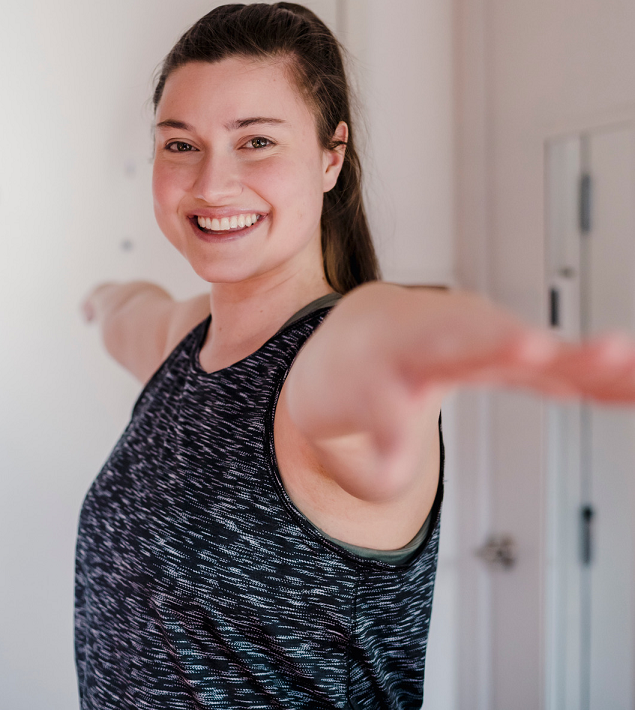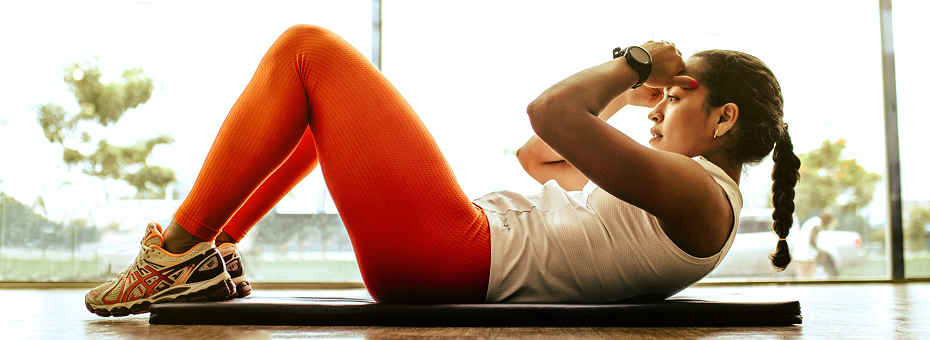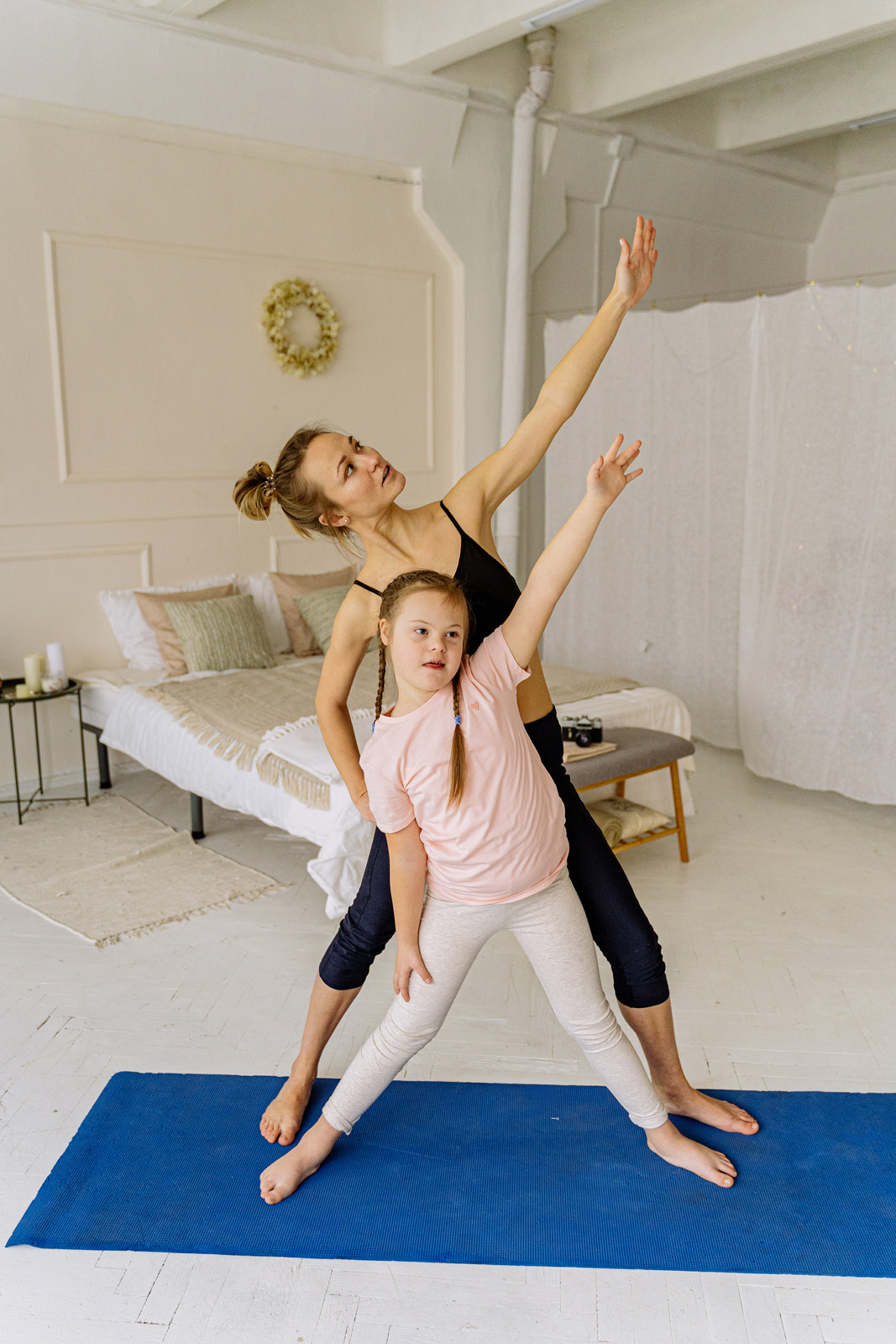At-home HIIT and circuit training
Doing a HIIT circuit at home is ideal for those who don’t have much time to get their daily movement in and need something that’s going to get your heart-pumping and your muscles burning quickly. A bodyweight circuit is even better if you don’t have any equipment to hand as it creates resistance using the natural weight of your body.
Anyone can do HIIT at home as you can cater the different exercises to your level of fitness. Circuit training for kids is also great because it can improve their fitness levels and keeps them entertained by incorporating games.
In this guide, we’ll run through a what HITT circuit training is, an at-home circuit workout that you can do without much space or equipment as well as a kids’ exercise circuit.
What is HIIT circuit training?
Circuit training is a type of workout that involves doing a range of exercises one after the other for a certain amount of time in a cycle. Circuit training is usually conducted in stations and the exercises focus on upper body, lower body, cardio and core, tackling both strength and aerobics. You’ll be given a list of exercises that you do for 20, 30 or 40 seconds each. Once you’ve completed the list, you go back to the beginning and go through the list again, creating a circuit.
HIIT, which stands for High Intensity Interval Training, involves doing small bouts of very intense exercise for short periods of time with a recovery period.
So, a HIIT circuit is a cycle of lots of different exercises while really pushing yourself during each one to make sure you’re getting the most out of your workout.
How to do circuit training at home
Doing circuit and HITT training at home may seem daunting, but all it takes is a small space (about the length of your arms or legs stretched out) and the motivation to get moving.
The workout below is designed to be done in 15 to 20 minutes, including a warm-up. If you want to get the most out of it, make sure to keep up the pace and do each rep to your full ability.
If you’re a beginner, we’ve also added a variation to each exercise that involves less intensity, but still provides a great workout.
Warm-up
While you might be short on time, it’s still important to warm up. A warm-up ensures your muscles are ready for the activity they’re about to experience, so if you’re performing a full body HIIT workout at home, it’s important to make sure you’ve warmed up every part of your body.
- Arm rotations (30 seconds)
- Hip rotations (30 seconds)
- Single leg rotations x 2 (30 seconds each)
- Walk on the spot (30 seconds)
- Jumping jacks (30 seconds)
- Calf raises (30 seconds)
- Small forward lunges (30 seconds)
- Small backward lunges (30 seconds)

Bodyweight HIIT circuit training

This workout contains 12 exercises that you’ll repeat for 30 seconds each with a 10-second rest in between, which is optional. Once complete, go back to the beginning and complete these exercises again for the same length of time. If you have more time to spare and really want to push yourself, try doing the circuit for a third time.
1. Star jumps
Stand with your feet hip distance apart and your arms by your sides. Jump your feet out sideways and lift your arms above your head at the same time. Then jump back to the starting position. Repeat this movement in quick succession.
Beginners: Instead of jumping, walk your feet out, lifting your arms slowly.
2. Up and down plank
Go onto your forearms and knees facing the floor. Walk your feet out so that you’re in a plank position. Using your core, bring yourself up onto your hands one at a time and then back down onto your forearms, keeping your feet still. To make it more difficult, you could kick your feet out sideways as you come up onto your hands.
Beginners: stay in a plank position, keeping your core engaged and your hips down.
3. Burpees
Start standing with your feet hip-width apart. Do a squat and place your hands firmly on the floor. Kick your feet backwards, then bring them back to below your hips, stand and jump.
Beginners: squat down and touch the floor with both hands, then reach your hands up to the sky and jump.
4. Wall sit
Place your back against a wall and slide down so that you’re in a seated position and hold. Your legs should be at right angles. To make this more difficult, hold your arms out in front of you and rotate as though you’re driving a bus.
Beginners: place your back against the wall and slide down so that your knees are slightly bent.
5. High knees
In a standing position, lift one knee up so that it’s in line with your hip and place it back on the floor. Do the same on the other leg. Repeat this in quick succession. Try to keep your knees as high as you can while doing this. To make it harder, raise and lower your arms as you’re switching legs.
Beginners: march on the spot.
6. Sit ups
Lying on your back with your knees bent, sit up quickly and then slowly lower your back and shoulders back down, engaging your core all the way.
Beginners: lying on your back with your knees bent, engage your core, and crunch forwards, lifting your neck and shoulders off the ground.
7. Mountain climbers
On your hands and knees facing the floor, kick your feet backwards so you’re in a high plank position. Bring one knee to your chest and then back to the starting position. Switch legs. Repeat this movement in quick succession.
Beginners: complete the movement slowly.
8. Side lunges and hop
Standing with your feet hip distance apart, step to one side as far as you can and bend your knee. Your other leg should be straight. Return to standing and do a jump, then repeat the lunge on the other leg.
Beginners: step to the side as wide as you can and then to the other side. Option to do a jump in between, if you can.
9. Tricep dips
Sit down on a chair with your hands placed either side of your legs on the edge of the chair. Slide your bottom to the front so that it’s off the chair. Bending your elbows, lower yourself down, keeping your bottom as close to the chair’s edge as possible. This is called a dip and you should feel it in the back of your arms. Straighten and bend your arms to complete the reps.
Beginners: sitting on the floor with your knees bent and your hands behind you, gently bend your elbows, transferring your weight to your palms. Then straighten your arms.
10. Jumping squats
Standing with your feet hips distance apart, sit back into a squat. Return to standing and incorporate a jump.
Beginners: complete a simple squat.
11. Reverse angels
Lie on the floor with your face towards the ground and your arms stretched above your head. Lift your feet and shoulders slightly off the floor. Bring your hands to just above your shoulders and then stretch them back out.
Beginners: lying on the floor facedown, alternate lifting your arms and feet off the ground.
Circuit training for children
Turning circuits into a game is a great way to get kids active without them even realising it! We’ve come up with a kids’ workout circuit that you can do at home, in the garden or even in the park. You could set up stations in different rooms, incorporate furniture or add music. The more creative your circuits are, the more fun they will have!
As this kids’ circuit workout is full of pretend play, it’s most suitable for children aged between 4 and 8-years old. For older children, you can remove the element of pretend and simply do the move in its basic form.
Each exercise should be done repeatedly for 30 seconds each, starting back at the beginning once you’ve completed a round. They could even shout out the countdown from 30 as they’re doing the exercise to test their counting and multi-tasking skills.
It’s important for kids to warm up, too. You can pick a few exercises from the adult warm-up above such as walking on the spot, jumping on the spot, arm rotations and single leg rotations. You could also incorporate some shoulder, neck, ankle and hand rolls as well.

1.Hula hoop
If you have a hula hoop, great! If not, it’s easy to pretend. This exercise is all about getting them to move their hips in rotation to work their core and lower body.
2. Frog or bunny jumps
Depending on which animal they prefer, pretend to be a frog or a bunny. Crouch down with hands on the floor and push the legs to hop.
3. Wall to wall
Starting at one side of a room, bend the knees and walk sideways in this position from one side of the room to the other, staying as low as possible.
4. Leap frogs
Using a surface that’s the same height as their knees or thighs, like a small chair or table, get them to place their hands on the edge and jump from side to side as high as they can in a leapfrog motion.
5. Climb the ladder
Standing up, pretend to climb a ladder as fast as they can. This should involve moving their arms and legs up and down in a climbing motion.
6. The floor is lava
Place some objects, such as a cushion, towel or mat at various points around the room. Jump from one to the other, being careful not to touch the floor!
7. Funny dancing
Put on an energetic song that they love and do the silliest dancing you can think of. This is a cardio exercise so the dancing should incorporate lots of movement, jumping and should use their full range of motion.
8. Surfs up!
Using a mat or a towel, get them to spread their legs wide, bend their knees and put their arms out so it looks like their surfing. Now, pretend to ride some waves, avoiding sharks as they go!
9. Flamingo
Balance on one leg and bend the knee of the leg they’re balancing on slightly. When 15 seconds is up, switch sides.
10. Ball toss
Grab a ball or small object and throw it from one person to another. If they’re completing the circuit by themselves, practice throwing the object high up in the air and catching.
11.Skipping rope
Using a skipping rope or long object like a dressing gown tie, skip over as many times as you can.
12. Walk the plank
In a standing position, bend the knees, put hands on the floor and walk the hands forward so they’re in a plank position. Then, walk the hands back towards the legs and stand up straight.
Doing a HIIT circuit workout at home a couple of times a week has so many great benefits; it keeps your fitness levels high, your mood lifted and your stress levels down, especially if you put your all into it. With consistent circuit training at home, you’ll find these exercises easier to complete and will be racing through three rounds before you know it!
Exercise at Home